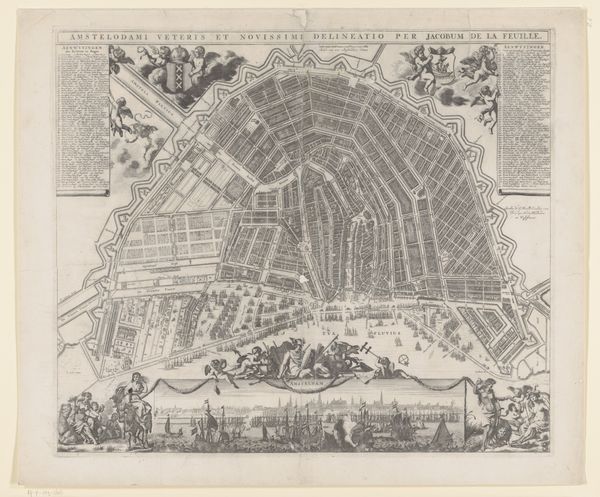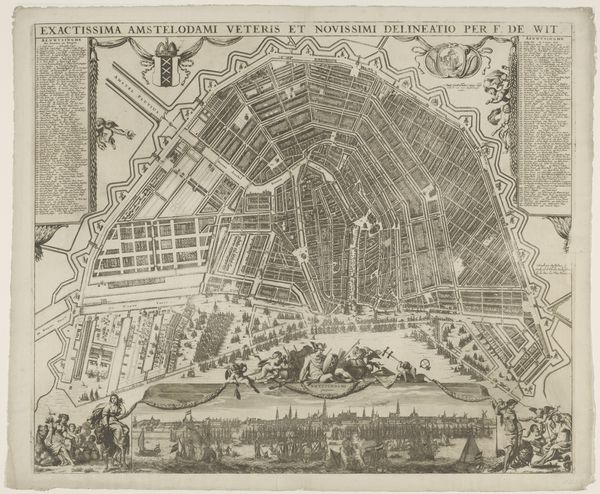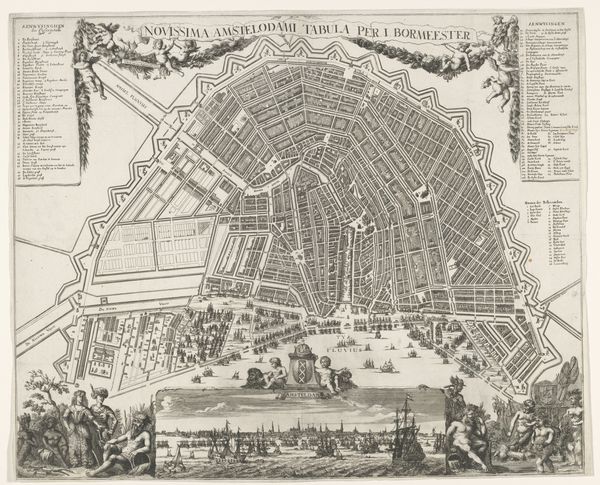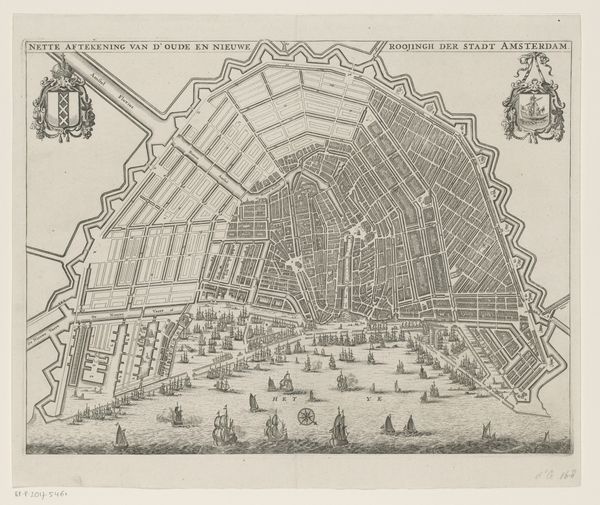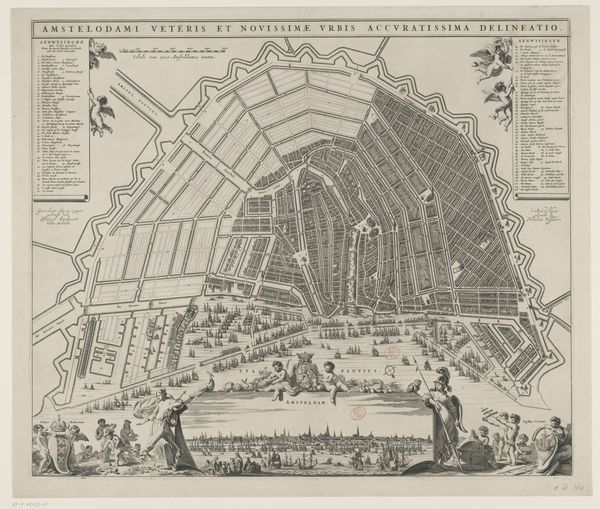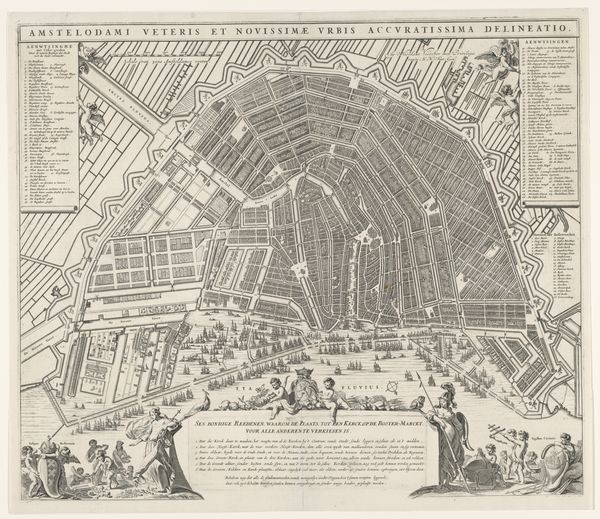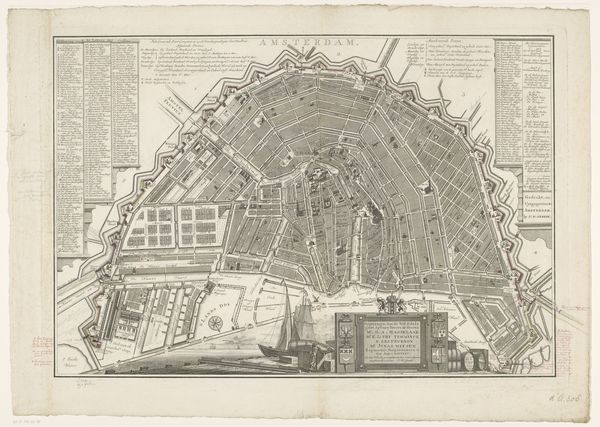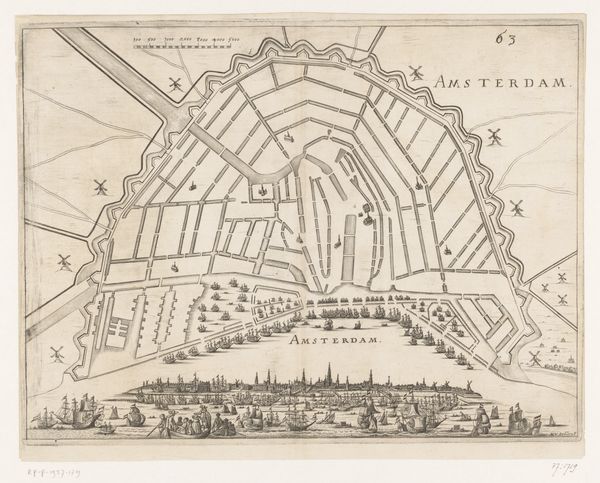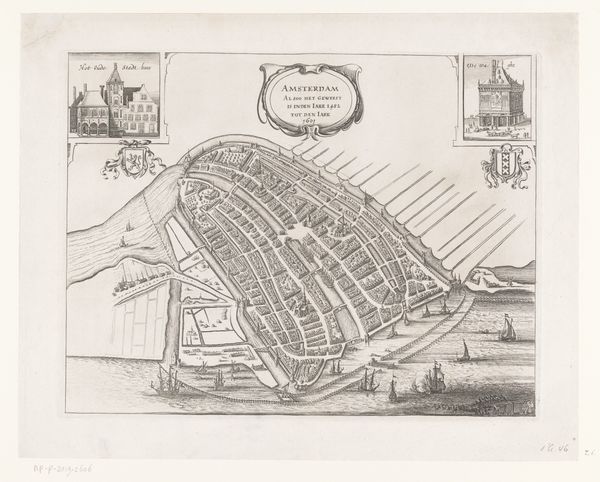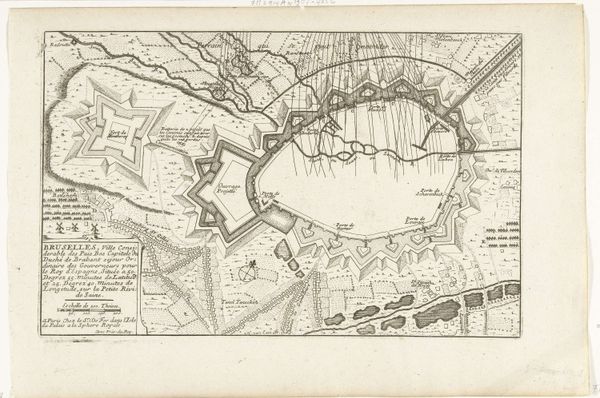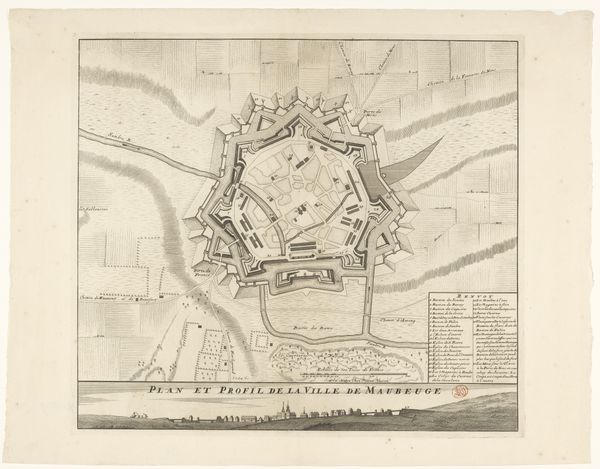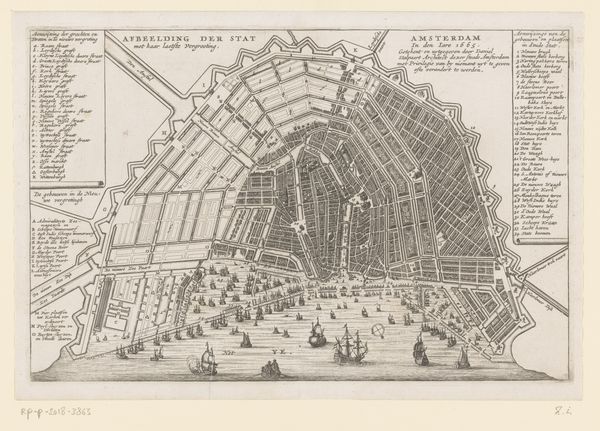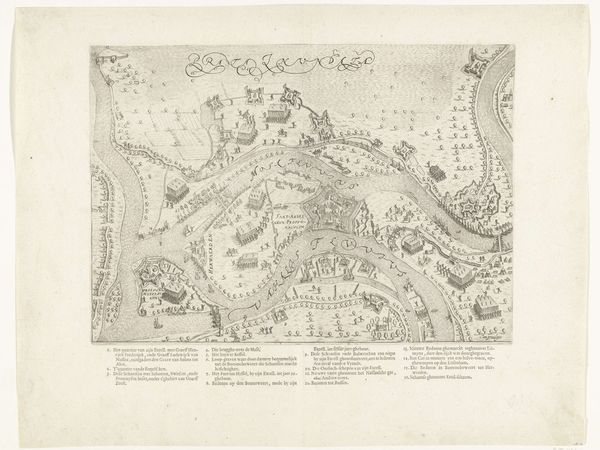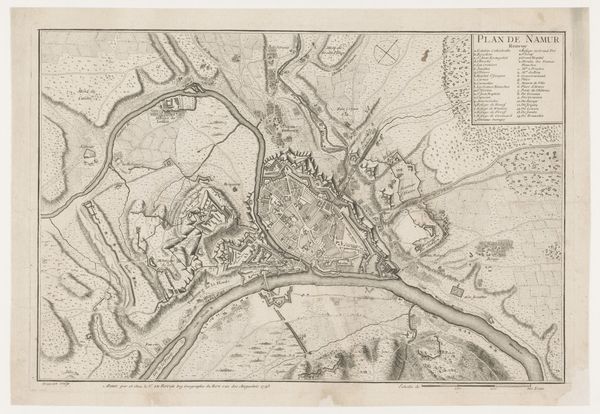
print, engraving
#
baroque
# print
#
cityscape
#
engraving
Dimensions: height 468 mm, width 566 mm
Copyright: Rijks Museum: Open Domain
Editor: This is the "Plattegrond van Amsterdam" by Romeyn de Hooghe, an engraving that’s estimated to be from 1674 to 1779. It is extremely detailed and features these baroque decorations at the bottom. How do you read these symbolic figures, and what sense of Amsterdam do they evoke? Curator: These figures along the bottom are the key to interpreting how Amsterdam wished to be seen. Look at Neptune, holding his trident—an emblem of power and dominion over the seas. He’s surrounded by allegorical figures representing the prosperity and global reach of Amsterdam's trade. They function as a visual argument. Editor: So, they're making a statement about Amsterdam's power through these classical references? Curator: Exactly! The choice of classical imagery isn't arbitrary. It connects Amsterdam to a lineage of powerful, prosperous cities of the past. What do you think that positioning does to how people at the time would perceive it? Editor: It elevates Amsterdam, casting it not just as a place of commerce but as a center of civilization and authority, right? A very considered piece of propaganda, you could say. Curator: Precisely. This map isn't just a depiction of streets and canals; it’s a carefully constructed representation of Amsterdam's identity and aspirations, drawing upon a shared cultural memory. Are we still doing the same thing with today’s symbols and artworks? Editor: That’s something to ponder for sure. I'm now aware that every symbol on it has a layered and intended meaning. Thank you! Curator: You're welcome. This shows how the city uses symbolic language to sculpt its image in our minds.
Comments
No comments
Be the first to comment and join the conversation on the ultimate creative platform.
